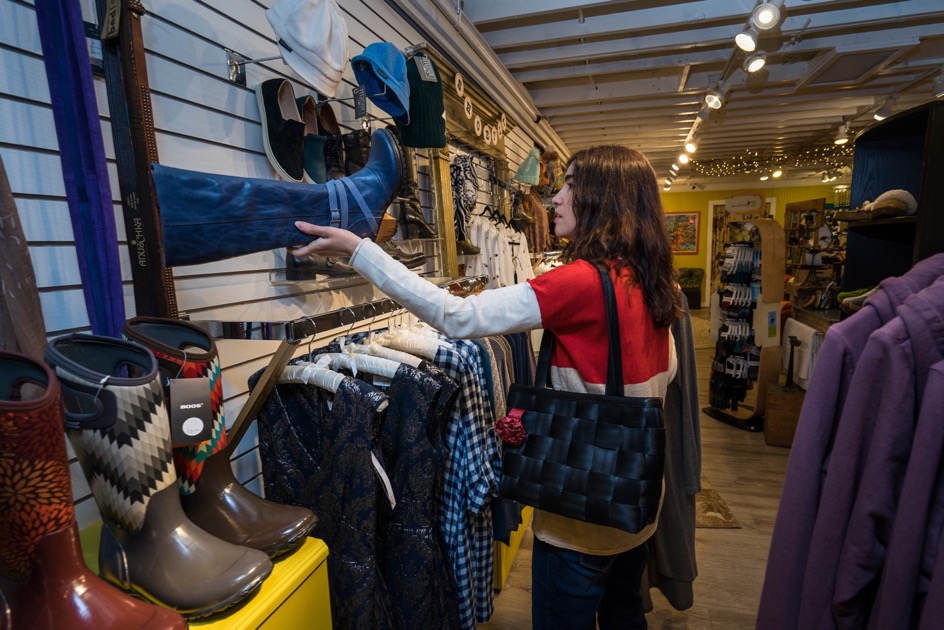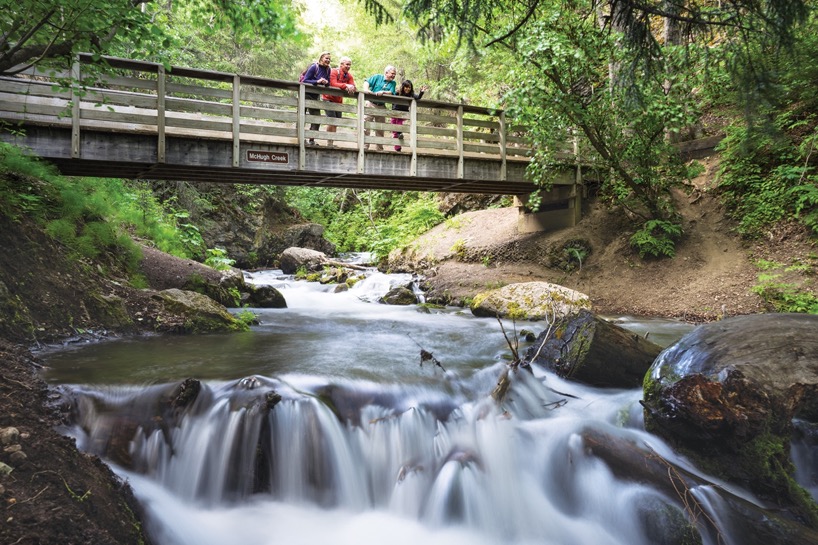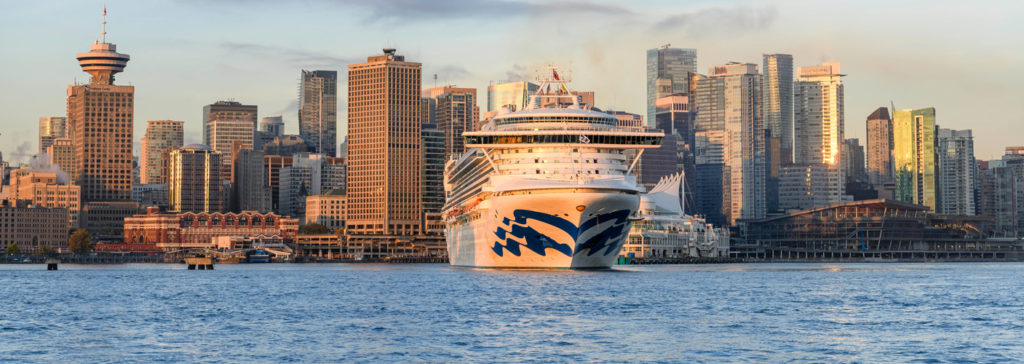
JUNEAU — On a given summer day in Juneau, it can be hard to tell that there may be 10,000 tourists roaming around the island.
In certain areas, it’s easy to see the crowds pouring off the cruise ship docks, headed for the main stretch of downtown. But a few streets away, the sidewalks are clear, the bus shelters empty, the benches unoccupied.
Most of the traffic comes from the cruise ships that visit the capital each summer. When all six docks are occupied, they can deliver enough passengers to double the population of Juneau, which is home to about 30,000 people.
This year, over the course of the whole summer, cruise ships are expected to bring about 1.3 million tourists through the state, with the majority of them landing in Juneau at least briefly. That’s more than half of the estimated 2.2 million total visitors expected in Alaska this season.
That’s a significant increase, even over last year’s traffic. However, the businesses in downtown Juneau are taking it in stride. On the Saturday before the Fourth of July, some workers said the summer had been going well so far, with the busiest days on Mondays and Tuesdays or “six-ship days.” The extra numbers haven’t upset the flow of business too much so far, they said.
The number of people coming to Juneau every summer has increased dramatically in the past few years. In 2016, the city received more than 1 million visitors, a 19 percent increase versus the year before. Two years later, more than 1.17 million people came to Alaska by cruise ship.
In fact, visitation to the state has increased every year for at least the last five years, according to statistics from the McDowell Group, with more cruise ship passengers for the past three years than the number in 2009, before a drop in Alaska tourism after the 2008 financial crash. But so far, Juneau has handled the increases well.
The city’s Tourism Best Management Practices, or TBMP, coordinated by the industry, have been in place since 1997. They’re not officially required by any government agency, but the tour operators and other businesses in the industry have agreed to operate within their parameters to keep the impact of visitors to a minimum.
“A lot of (the provisions) came about through a process like now, in the 1990s, when the industry was growing and the city was admittedly behind the eight ball,” said Kirby Day, who manages the port operations for the Holland America Group in Alaska. “As the years went by … we built those into what we do today.”
Though they’re not enforced by the city, the program has good compliance, with about 130 operators and about 3,000 employees included, Day said. Even when an operator disagrees with a proposed rule, they’ve been able to work together until everyone is on the same page. The group meets as a whole about once a year to go over complaints from the summer and update or address the guidelines to keep on top of changes.
Operators have taken it on themselves to work on improving service while reducing impacts, too. The aviation operators in Juneau, which include a handful of fixed-wing services and a number of helicopter tours, meet at the beginning of every summer to discuss their flight patterns, call frequencies and the landmarks they use to better coordinate their traffic. It’s a major step for safety, said Joe Sprague, the CEO of Wings Airways, which operates flight tours to the Juneau Icefield. (Wings Airways is partly owned by the Binkley family, which also owns the Anchorage Daily News and the Alaska Journal of Commerce)
Wings operates a fleet of five DeHavilland Otters, which carry 10 passengers each. But planes that big were a conscious choice and investment; there are now fewer planes in the sky, which improves safety, Sprague said. The new planes are also equipped with 900-horsepower engines that operate relatively quietly.
“It took investment, but the result is that we have fewer flights that are quieter, which the neighbors appreciate, while still accommodating the same number of guests,” he said.
While the cruise ship docks are regularly crowded with visitors, they generally spread out. Wings Airways gets about 85 percent of its customers from cruise ships, Sprague said, and the majority are booked through the cruise line companies ahead of time.
But the operators also regularly bus people out of the downtown area to locations like Mendenhall Glacier or to Auke Bay for whale-watching tours, coordinating them within the city. Lines at downtown businesses and popular tourist sites can get long when buses arrive, but there are still relatively quiet downtown neighborhoods even when the docks are in full swing.
Even as the number of tourists increases, new companies are stepping in to offer various excursions. The city has been instrumental in planning with the industry to keep the process streamlined as well, looking to projects like the installation of new stanchions near the cruise ship docks to improve the flow of people through traffic.
“It’s planning and have some process and intentionality about what you’re going to do with (visitors) when they come,” Sprague said.
Each individual cruise passenger doesn’t spend that much money in Juneau — about $162 per person, with the majority going to tours and excursion activities. But combined with other visitors, the cruise lines and crew members, it can make a significant total: $218 million in direct spending in 2016, according to the McDowell Group.
That meant about $13.5 million in tax revenue for the City and Borough of Juneau, with about $10.4 million of that in sales taxes. Another $14.2 million came in from marine-related revenues, including the state cruise ship passenger tax and Juneau’s marine passenger fee.
Most other industries in Alaska have been shrinking or holding level since 2015. Tourism, however, has been riding the wave of an improving economy in the Lower 48. Other areas of Alaska have been brushing up their efforts to attract tourists to get in on a cut of that spending.
So far, they are seeing an increase — just more than 2 million tourists visited Alaska last year, with about 900,000 of them visiting areas by air, car and rail.
As they look to expand their industries, trade group Alaska Travel Industry Association is working on policy and marketing efforts to attract tourists year-round, including expanding winter tourism. Though Juneau has a head start on other cities and boroughs, some are starting to look at its best practices, according to Julie Jessen, communications and public relations manager for ATIA.
“Haines has also started a discussion on tourism growth and planning,” she said in an email. “As tourism — particularly the cruise sector — continues to project growth, more and more communities may seek examples like the TBMP.”
She added that the ATIA will host a community and industry discussion Oct. 7 about the growth of the cruise tourism industry in Juneau as a lead-in to the annual conference and trade show, and will include a plenary session with how other communities are handling growing visitation.
When the industry first implemented the TBMP in 1997, the city received about 600,000 visitors per year. In the 20 years since, the number has more than doubled, even though people thought at the time that Juneau couldn’t handle any more visitors, Day said. No program will be perfect, but the TBMP plan has helped mitigate impacts and made Juneau a different place than it would have been without them, he said.
Every community looks different, but the template for the protocols would work anywhere, he said.
“Growth in visitation is taking place everywhere,” he said. “Places like Homer, Talkeetna, anybody, can take this template and pare it down to what works in their community.”
Source: Alaska Journal of Commerce



